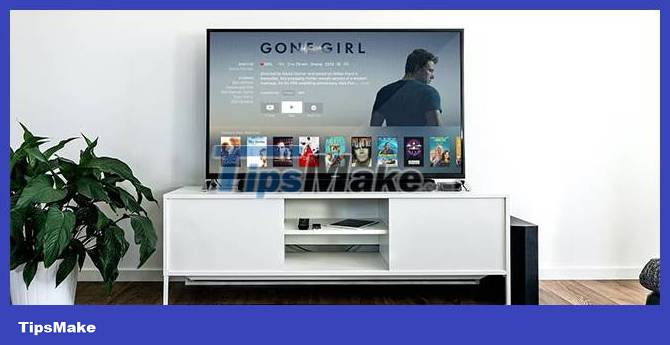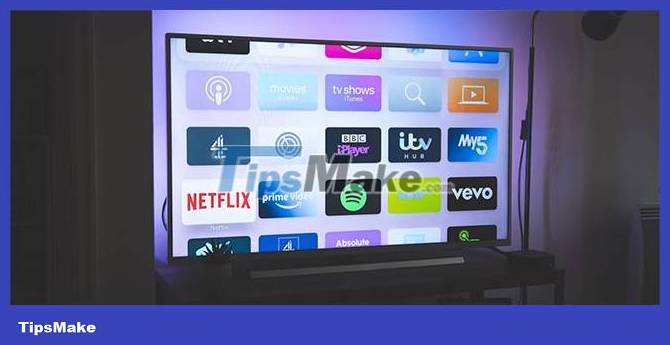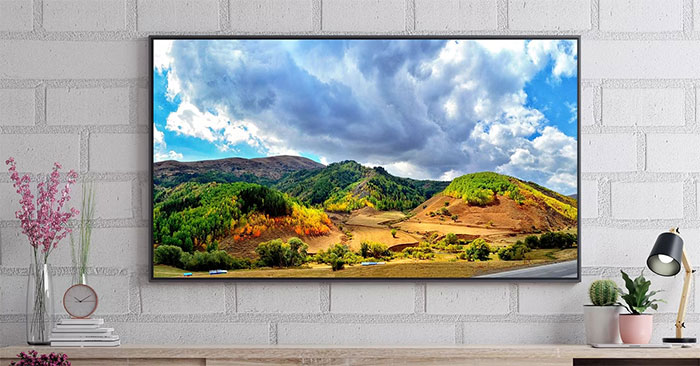Should I choose NanoCell or OLED TV technology?
Every year, it seems like there's a new type of TV technology coming out. Two of the newest types of technology are OLED displays and LG's NanoCell displays. These are two quite different types of televisions that are often marketed with similar features.
So, what are NanoCell and OLED TV? How are they different?
In this live article, TipsMake will explain what NanoCell displays and OLED displays are, how they work, and cover the pros and cons of each, so you know exactly what i will receive it.
What is NanoCell?

NanoCell is LG's new screen panel technology, equipped on many of the company's new TVs. So, what's different about NanoCell?
LG NanoCell TVs are very similar to light-emitting diode (LED) and liquid crystal display (LCD) TVs, but they're still backlit and offer the same resolution as other 4K TVs.
The difference is that NanoCell uses an additional layer of nanoparticles that act as a color filter, improving the vibrancy and accuracy of displayed colors. In this way, they are actually more similar to QLED screens.
Pixels on a TV screen are red, green, and blue. The combination of these colors can create millions (or a billion in the case of NanoCell TVs) of different colors.
However, incoming light can distort the colors displayed on the TV screen. Pixels next to each other can also 'transfer' their color to neighboring pixels and affect color accuracy.
The color filter used in NanoCell TVs filters out 'unwanted wavelengths of light'. In other words, it filters out light resulting in the display of false colors. This improves the red, blue and green colors displayed on the NanoCell TV. It also improves the purity of the whites and blacks you see on screen.
Some NanoCell TVs also offer full-array local dimming (FALD). This technology dims the backlight on the TV in dark areas, providing darker blacks and shadows, improving the dynamic range of the screen. This gives the same effect as an OLED TV, but at a much lower price.
So, why would you choose a NanoCell TV instead of an OLED TV?
Advantages of NanoCell TV
Here are some of the key advantages associated with purchasing a NanoCell TV.
- NanoCell offers better picture quality and dynamic range than other LED TVs with bright, vivid, accurate colors.
- NanoCell TV's accurate colors deliver sharp, detailed images.
- NanoCell has a mid-range price (about half the price of an OLED TV).
- NanoCell TVs do not dim like traditional LCD screens.
- Wide viewing angle: NanoCell TV can be viewed from angles up to 178 degrees.
- NanoCell TVs do not 'burn-in' if the static image is left on for too long.
Disadvantages of NanoCell TV
- NanoCell TV is not an absolutely perfect product. You will need to keep in mind the limitations below when buying a NanoCell TV.
- NanoCell TVs are still LCD screens with backlighting, which means the color accuracy and picture quality aren't quite the same as OLED.
- Blacks are not as dark on the NanoCell screen as they are on OLED TVs.
- NanoCell TVs have higher power consumption compared to OLED.
What is OLED?

OLED stands for Organic Light-Emitting Diode. This is a newer digital display technology that can display images without a backlight. Instead, each pixel is illuminated individually.
One benefit of this is that "true black" can be achieved where parts of the TV can be completely dark. This can happen because when the TV area is black, the pixels are actually turned off. Additionally, the fact that each pixel is individually illuminated means that OLED TVs have a very high dynamic range - much better than standard LED and NanoCell TVs.
OLED technology creates extremely detailed images. Because colors are so vivid and images have a higher dynamic range, OLED TVs can produce much more detailed images than their competitors.
OLED TVs are highly appreciated by TV experts and photographers alike for their contrast, deep blacks, and excellent dynamic range.
Advantages of OLED TV
Here are some key reasons to buy an OLED TV.
- OLED TVs have true blacks and vivid colors, giving much better picture quality than NanoCell TVs.
- Because OLED TVs don't require a backlight to run continuously, they are often more energy efficient.
- OLED TVs can be thinner than other LED TVs because they don't require a backlight, which means they can be used in curved displays (and other types, like rollable TVs).
- Most OLED displays have fast response times and low input lag. This is great for those looking for a TV for gaming.
- The OLED display has a faster response time than before, meaning it's great for fast-moving video (such as sports or gaming). See the listings for PS5 and Xbox Series X/S for specific recommendations.
- OLED TVs maintain brightness and accuracy with very wide viewing angles.
Disadvantages of OLED TV
Despite the attention to detail that OLED TVs provide, you should also note that these devices have a few shortcomings.
- OLED TVs are much more expensive than other LED TVs and are twice the price of LG's NanoCell TVs.
- OLED TVs have the risk of 'burn-in', which means saving images on the screen. That being said, the burn-in process often takes thousands of hours to occur.
Which is better NanoCell or OLED?

LG's NanoCell TV is an IPS (In-Plane Switching) LCD screen. These types of screens provide a very wide viewing angle. NanoCell TVs have a second feature, a layer of nanoparticles that filters out incoming wavelengths of light that can negatively affect the color and brightness of the screen.
The filter primarily helps deal with red and green colors, meaning that color can't "bleed" out to other parts of the screen. As a result, NanoCell TVs have very accurate colors compared to other LED displays. Therefore, when comparing NanoCell with LED, LG's panel has the advantage.
On the other hand, OLED TVs are a completely different type of screen. OLEDs are self-illuminating, meaning it's possible to have truly black parts of the screen and extremely vivid colors. Since there is no need for a backlight, OLED displays can be made very thin and can also be made into a curved format.
Because each pixel is illuminated independently, OLED displays have excellent picture quality, use less power and have faster response times than older LED and LCD competitors.
Which TV is best for you?
In most cases, OLED performs better than LG's NanoCell TVs. OLED offers better picture quality, gaming performance, lower power consumption, deeper blacks, brighter whites, and overall stunning colors.
However, NanoCell is better for use in bright rooms and does not come with the same risk of burn-in as OLED. NanoCell TVs are also much cheaper than OLED TVs.
Keep your budget and goals in mind, then choose a TV that best suits your needs.
You should read it
- Should I buy a QLED, OLED or LED TV?
- What is evo OLED panel? What's different from OLED?
- Difference between QLED and OLED TV
- What is MicroLED? What is MicroLED different from OLED?
- What is QD-OLED? Why is QD-OLED better than OLED or LCD TV?
- What is Neo QLED? Is it better than QLED and OLED?
- 6 best OLED laptops 2023
- Done, Samsung and LG will be the makers of OLED displays for the iPhone
- LG Display presents 65-inch scrollable OLED TV like paper
- Samsung Galaxy S21 will likely use the Chinese manufacturer's OLED panel, no longer 120Hz
- What is MicroLED? What's different from OLED? How is the application?
- Samsung's new durable OLED screen passes the test of being hammered






 What is evo OLED panel? What's different from OLED?
What is evo OLED panel? What's different from OLED? What is QD-OLED? Why is QD-OLED better than OLED or LCD TV?
What is QD-OLED? Why is QD-OLED better than OLED or LCD TV? Instead of OLED or Micro-LED, why did Apple choose a Mini-LED for the new iPad Pro and MacBook Pro displays?
Instead of OLED or Micro-LED, why did Apple choose a Mini-LED for the new iPad Pro and MacBook Pro displays? What is MicroLED? What is MicroLED different from OLED?
What is MicroLED? What is MicroLED different from OLED? 6 best OLED laptops 2023
6 best OLED laptops 2023 What is Neo QLED? Is it better than QLED and OLED?
What is Neo QLED? Is it better than QLED and OLED?